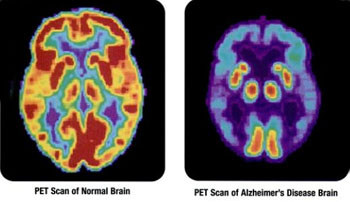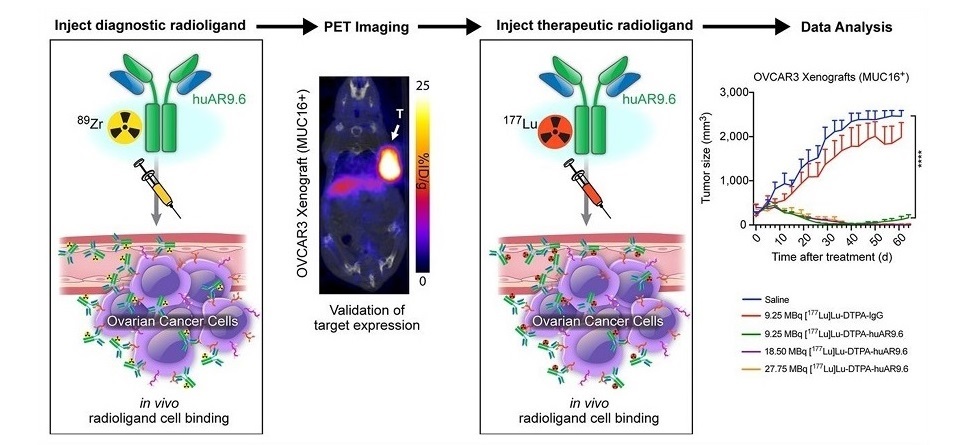Earlier Diagnosis of Alzheimer’s Disease Attained with New PET Tracers
By MedImaging International staff writers
Posted on 11 Mar 2014
New nuclear imaging techniques are helping to diagnose Alzheimer’s disease (AD) much earlier than ever before. Recently developed tracers, used with positron emission tomography (PET) imaging, make beta-amyloid in the brain visible. This part of a protein, which is a key causal factor of Alzheimer’s, can now be identified way before the onset of the disease’s signs. Posted on 11 Mar 2014
“This helps doctors to confirm their diagnosis and to plan the individually appropriate treatment strategy right from the start. Also, it will allow [us] to apply future medications, which are currently being developed, in time,” said Prof. Swen Hesse, a specialist from the European Association of Nuclear Medicine (EANM; Vienna, Austria).

Image: PET scans showing the differences between a normal older adult\'s brain and the brain of an older adult afflicted with Alzheimer\'s disease (Photo courtesy of the NIH).
The earlier treatment begins for AD, the higher its effectiveness. The fact that newer and more lasting therapies might become available soon increases the significance of early diagnosis. The target of the PET scan is beta-amyloid, which is the chief component of plaques that harm the brain’s neurons and are one of the hallmarks of ADs. Three different tracers (radioactively labelled substances the patient is injected with) have been recently developed, which make these plaques visible on the computer screen. One of the compounds (florbetapir F-18) has already been approved by the healthcare authorities of the European Union and the United States alike, whereas the two other ones (flutemetamol F-18 and florbetaben F-18) are expected to be approved by both authorities soon. With the aid of these tracers, the probability that AD can be detected up to 15 years before the onset of severe mental impairment.
However, while a negative PET scan—one that shows little or no beta-amyloid accumulation in the brain—excludes AD as the cause of the patient’s disease, this does not quite perform the same because other forms of dementia such as dementia with Lewy bodies (DLB) can also have positive scans, and a positive scan does not inevitably mean clinical dementia. Ongoing studies will reveal whether the use of radioactive amyloid tracers and PET imaging can forecast the individual risk of future conversion to AD dementia and whether they are suited to assess how patients respond to treatment. The nuclear imaging techniques, for now, are not a replacement but a valuable addition to established diagnostic tools.
“Amyloid imaging allows doctors to determine right from the start and with high accuracy whether, in patients with mild symptoms, Alzheimer’s can be excluded, so that some other kind of dementia or another condition has to be taken into account,” remarked Prof. Hesse. “The effectiveness of these substances was established in excellent clinical studies that showed their accuracy in detecting beta-amyloid in the brain according to histopathological results.”
Amyloid imaging, according to the EANM, will further treatment approaches by helping to select study participants into clinical trials, which may lead to disease-modifying drugs. Such tracers are also prone to new combinations of PET with magnetic resonance imaging (MRI) as stand-alone examinations, being, in fact, two devices in one. This will further reduce scanning time and increase patient’s comfort, according to the scientists.
Related Links:
European Association of Nuclear Medicine














